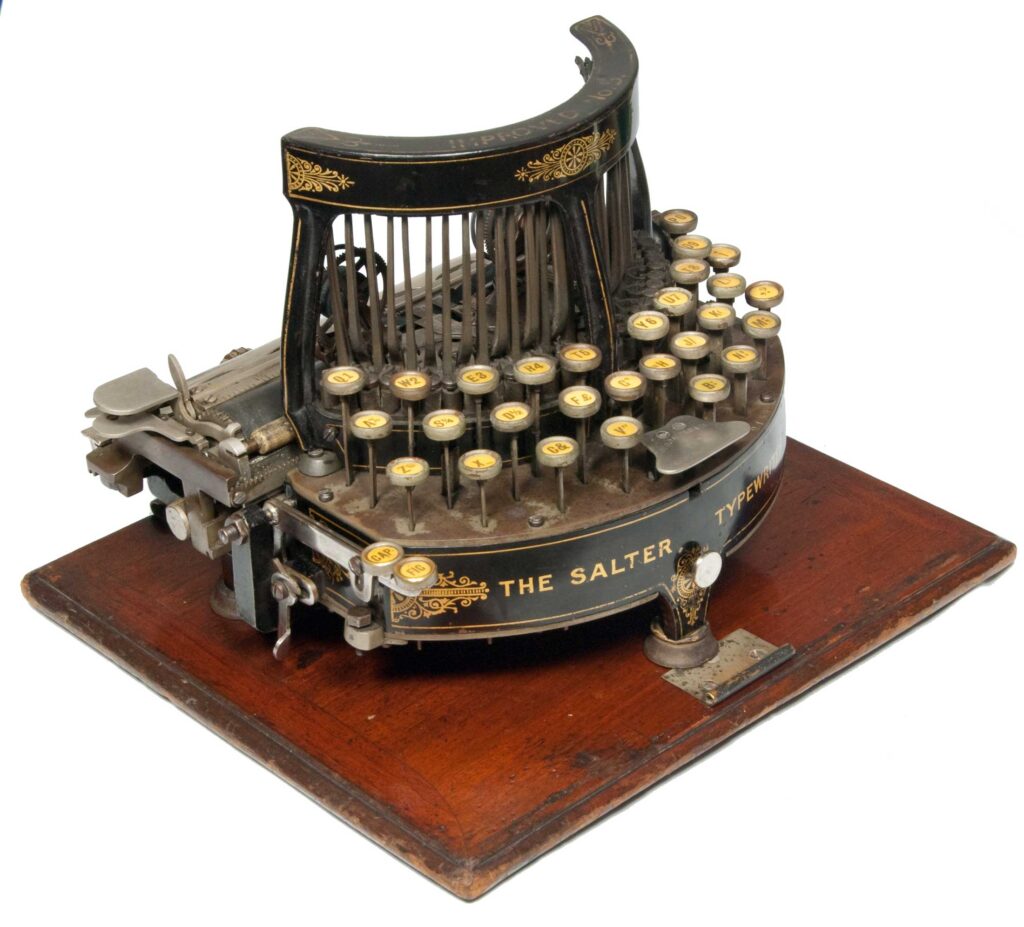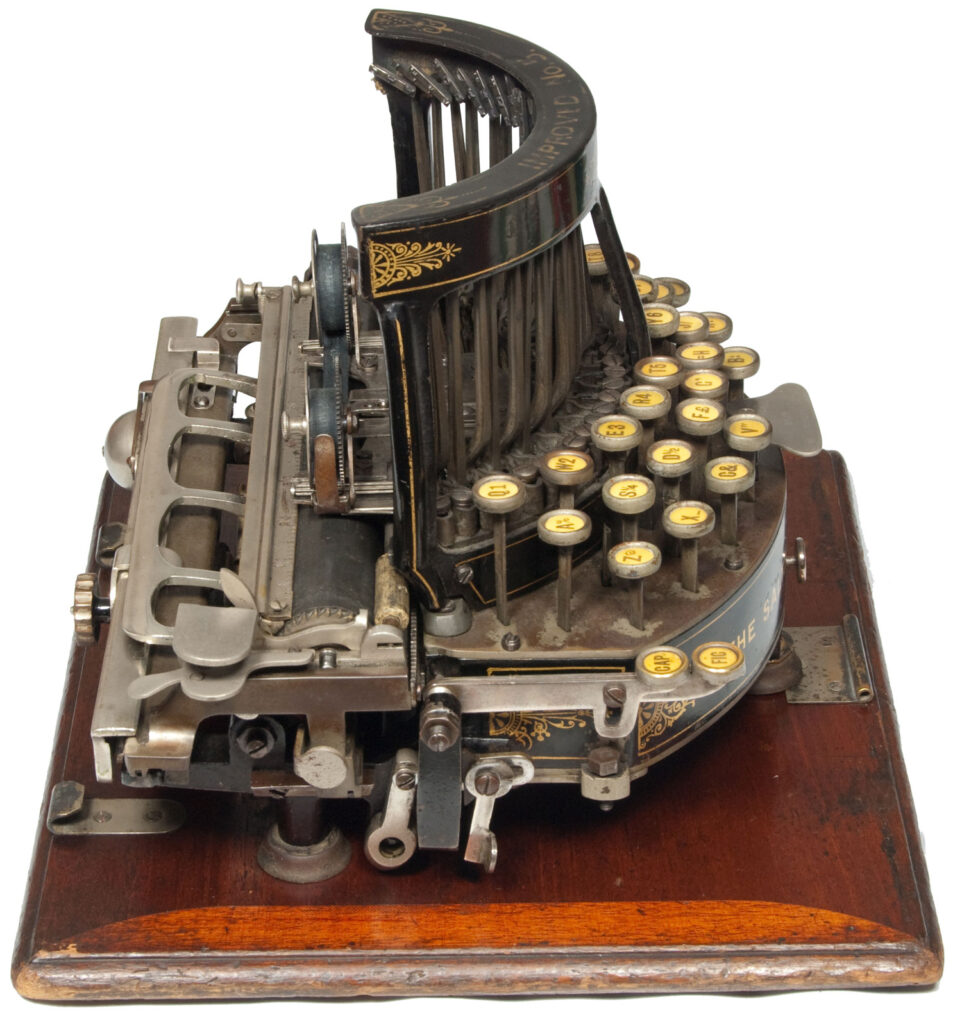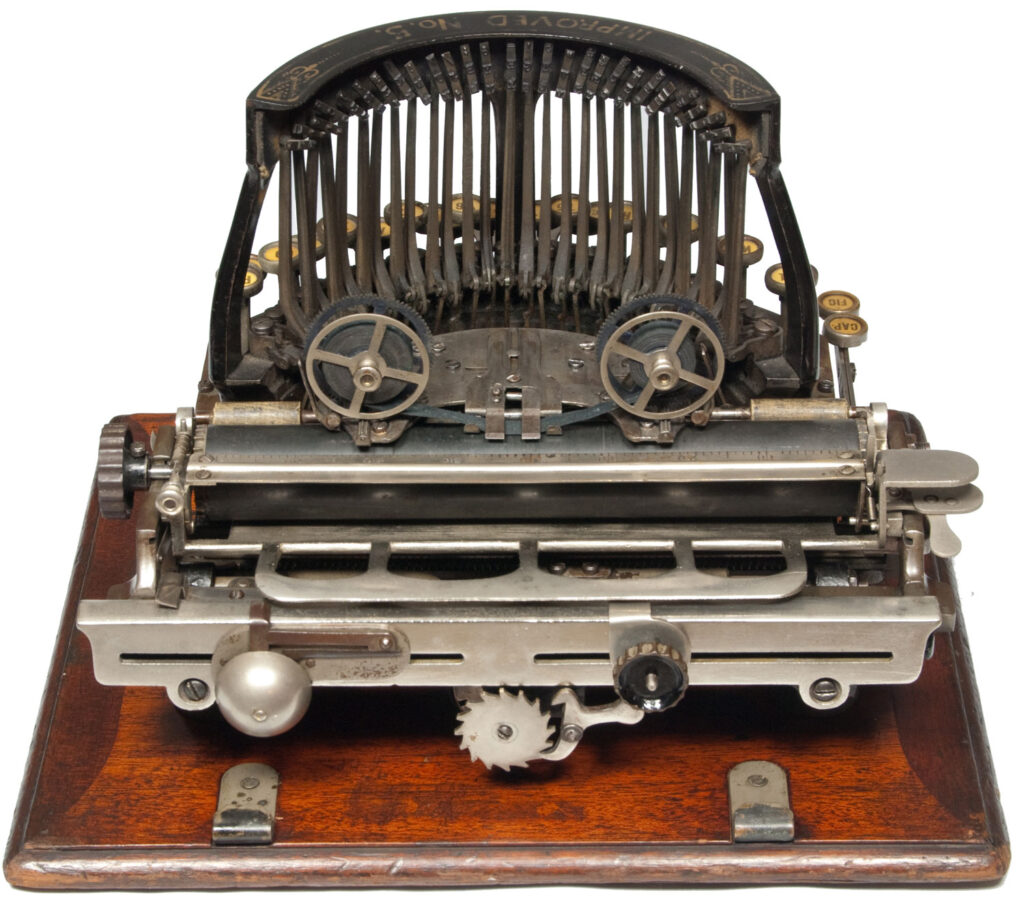The Salter 5 is a fine example of Victorian typewriter design, with its elegant form and gold decorative motifs.
Geo. Salter & Co. of West Bromwich (see factory below) patented their typewriter in 1892 and began manufacturing it in 1896. Model 5 was the first officially designated model number they used. As with other 19th-century typewriters, Model 1 was sometimes renamed with a later number to give the impression that the typewriter was proven and successful.
The Salter Company was well known at the time as a maker of spring scales, particularly penny scales, which were a common sight in train stations and other public places. Today, Salter remains the largest manufacturer of British scales.
When I was restoring this typewriter, I was struck by how solidly it was built. Despite its delicate appearance, it was constructed with impressively thick metal throughout. It became clear that the designers were applying the same strength requirements used in their penny scales to the construction of their typewriter.
The typewriter has two shift keys, one for uppercase and one for figures. As a result, only three rows of keys are required. The typebars stand upright behind the curved shield above the keyboard and swing down to strike the top of the platen. To see what has been typed, one looks up and over the shield – with no slouching in the chair.
At this early stage in typewriter history, a curved keyboard was considered a better match for the natural position of the fingers. A straight keyboard would later prove to be more practical, and the curved layout would disappear by the early 20th century. Today, typewriter collectors are especially fond of these curved-keyboard machines, which have become fashionable again, though in a different light.







